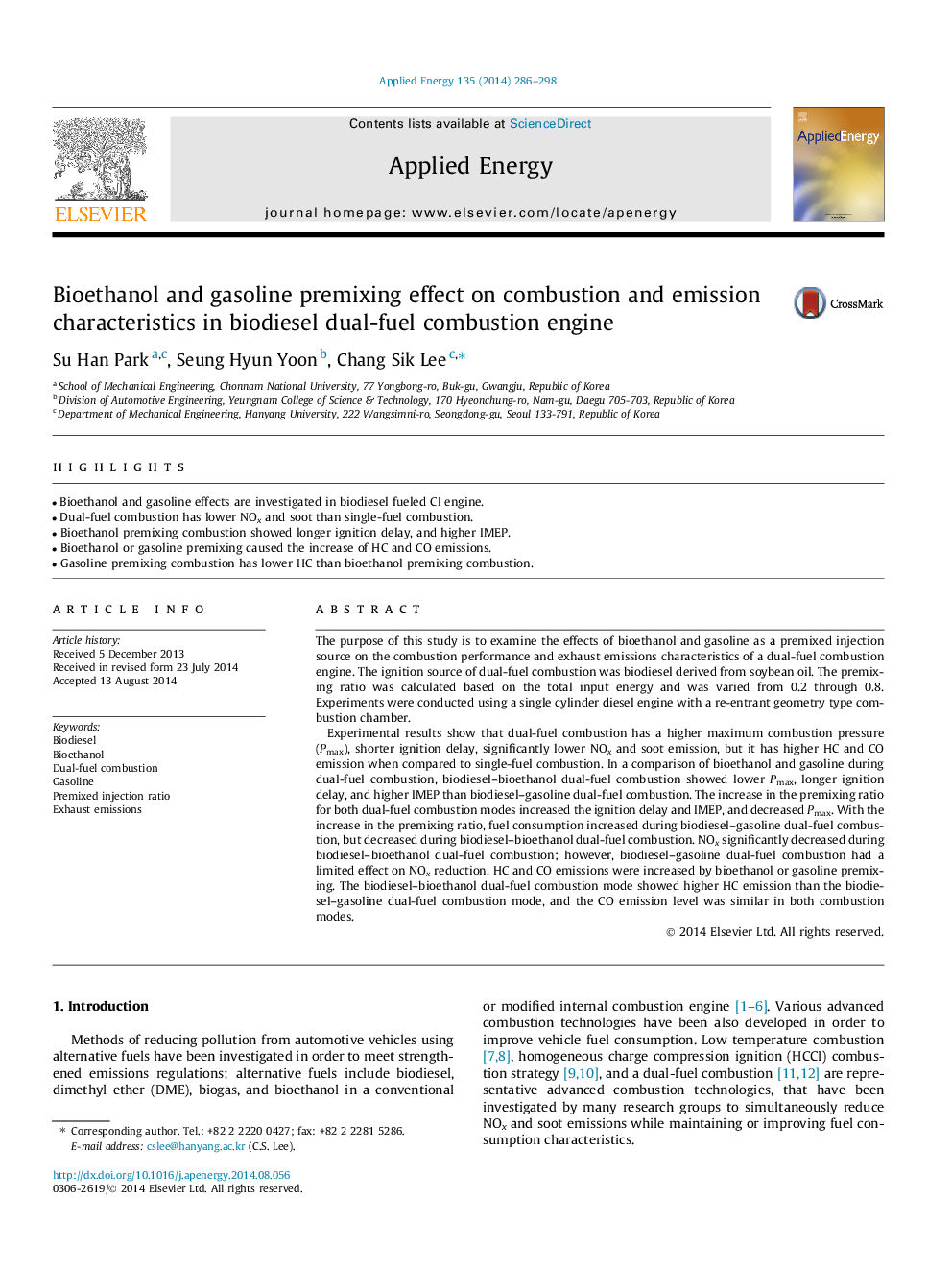| Article ID | Journal | Published Year | Pages | File Type |
|---|---|---|---|---|
| 6689141 | Applied Energy | 2014 | 13 Pages |
Abstract
Experimental results show that dual-fuel combustion has a higher maximum combustion pressure (Pmax), shorter ignition delay, significantly lower NOx and soot emission, but it has higher HC and CO emission when compared to single-fuel combustion. In a comparison of bioethanol and gasoline during dual-fuel combustion, biodiesel-bioethanol dual-fuel combustion showed lower Pmax, longer ignition delay, and higher IMEP than biodiesel-gasoline dual-fuel combustion. The increase in the premixing ratio for both dual-fuel combustion modes increased the ignition delay and IMEP, and decreased Pmax. With the increase in the premixing ratio, fuel consumption increased during biodiesel-gasoline dual-fuel combustion, but decreased during biodiesel-bioethanol dual-fuel combustion. NOx significantly decreased during biodiesel-bioethanol dual-fuel combustion; however, biodiesel-gasoline dual-fuel combustion had a limited effect on NOx reduction. HC and CO emissions were increased by bioethanol or gasoline premixing. The biodiesel-bioethanol dual-fuel combustion mode showed higher HC emission than the biodiesel-gasoline dual-fuel combustion mode, and the CO emission level was similar in both combustion modes.
Related Topics
Physical Sciences and Engineering
Energy
Energy Engineering and Power Technology
Authors
Su Han Park, Seung Hyun Yoon, Chang Sik Lee,
